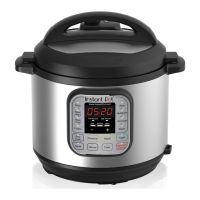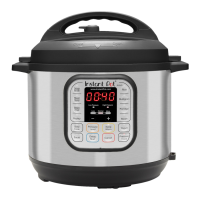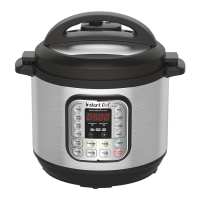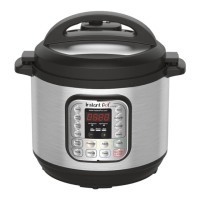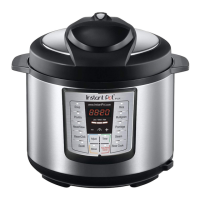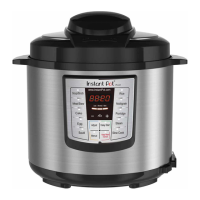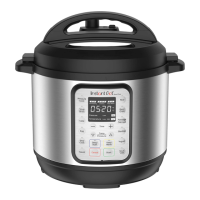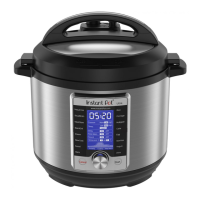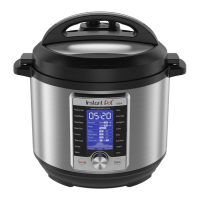18
Regular care or maintenance is essenal in ensuring that this product is safe for use. If any of
the following circumstances take place, please stop using the appliance immediately and contact
Instant Pot support team.
Power cord and plug suer from expansion, deformaon, discoloraon, damages, etc.
A poron of power cord or the plug gets hoer than usual.
Electric pressure cooker heats abnormally, eming a burnt smell.
When powered on, there are unusual sounds or vibraons.
If there is dust or dirt on the plug or socket, please remove dust or dirt with a dry brush.
Cauon: please make sure the appliance has cooled down and is unplugged before cleaning.
1. Clean the product aer each use. Wipe the black inner housing rim and slot dry with cloth to
prevent rusng on the exterior pot rim.
2. Remove the lid and take out the inner pot, wash them with detergent, rinse with clear water
and then wipe dry with a so cloth. The stainless steel inner pot is also dishwasher safe.
3. Use water to clean the lid, including the sealing ring (which can be removed), exhaust valve,
an-block shield, and wipe them clean with dry so cloth. Do not take apart the steam
release pipe assembly.
4. Clean the cooker body with clean damp cloth. Do not immerse the cooker into water. Do not
use a wet cloth to clean the pot while the power cord is plugged into the power outlet.
If you experience any problem with the appliance, please DO NOT return the product to the
retail store or online merchant. For technical assistance and product return informaon, please:
Create a support cket at www.InstantPot.com/support/
Email to support@instantpot.com
Or call 1800 828-7280 for Instant Pot customer care team
The cases in the following tables do not always indicate a faulty cooker. Please examine the cooker
carefully before contacng the support for repair. You can also nd help videos and FAQ on
www.InstantPot.com/faq/
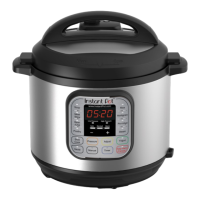
